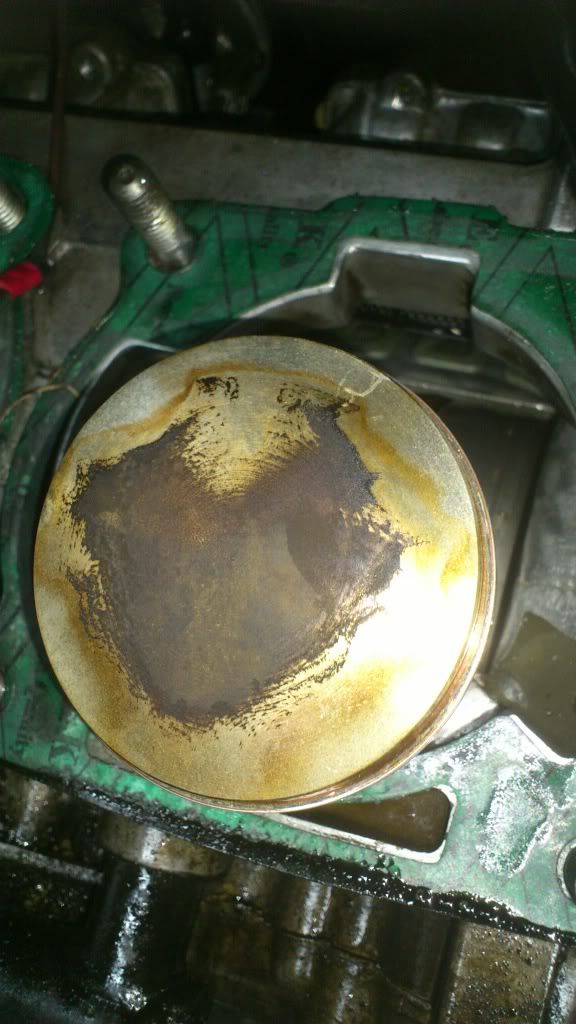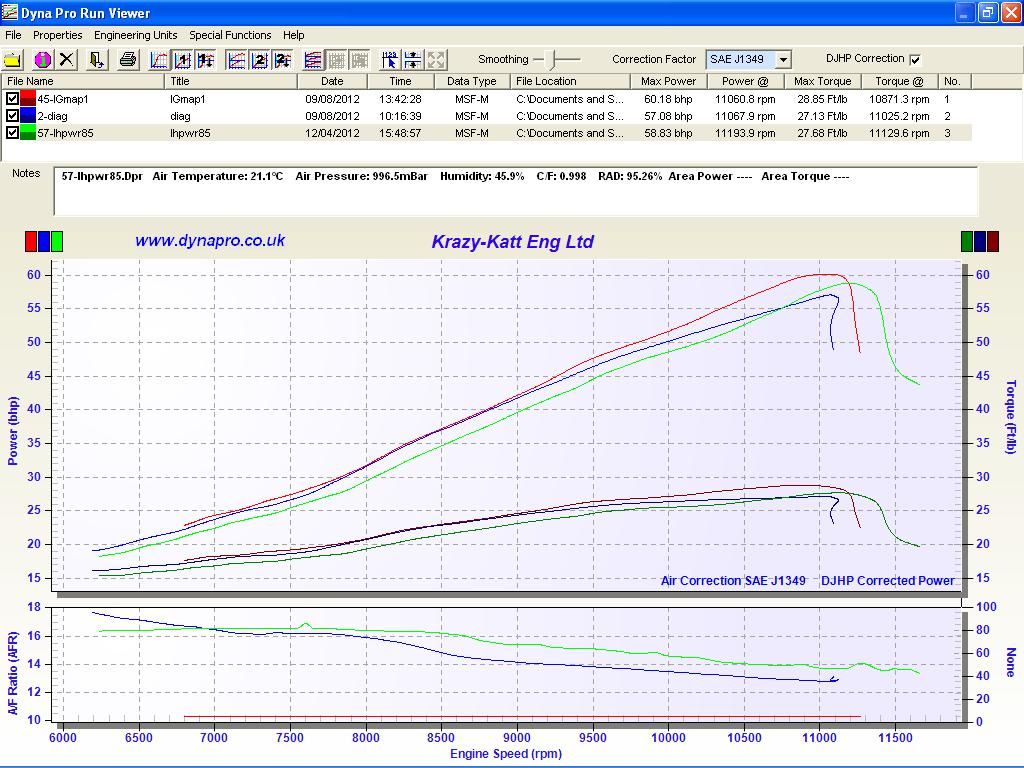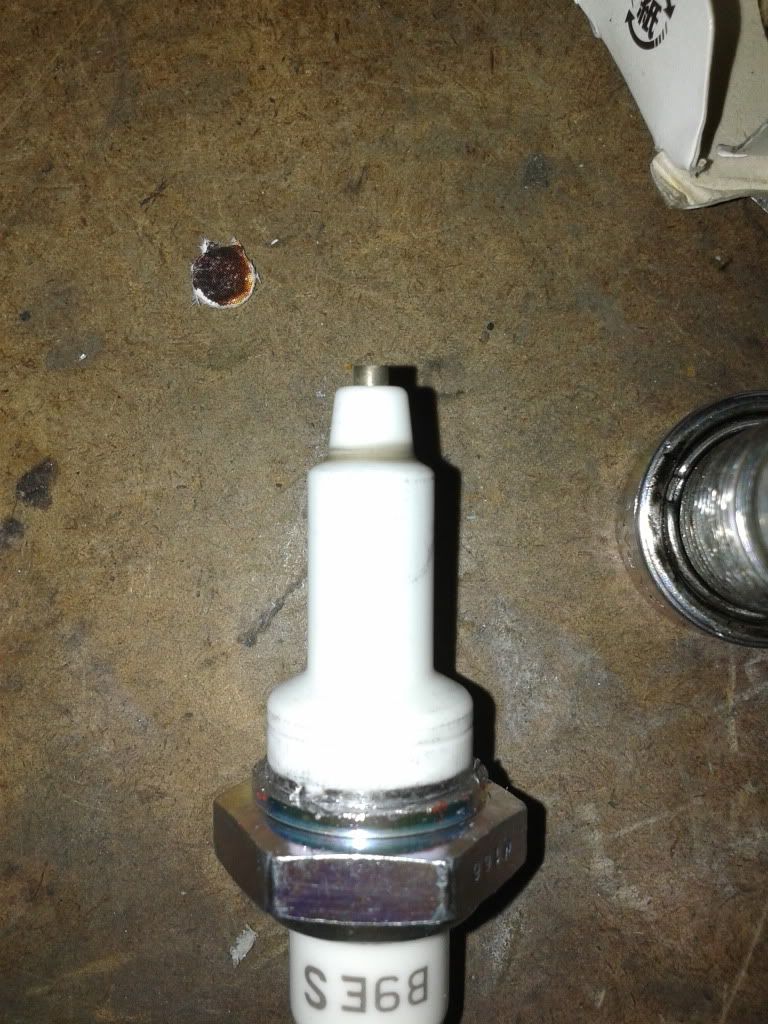This is the latest Bemsee dyno graph.
This is with the original bottom end (not the one that I used the last time), using the same Bob Farnham tuned top end, KR1S spannies and a KR1S CDI;

Power through the rev range is up, but still not that great - however, this is the bottom end that seized :'-(
There was about a 3hp increase using the Bob Farnham top end over a completely standard top end
I'm having this discussion with a friend on facebook who thinks that I should be running at 40:1 oil instead of 35:1 and it is that he thinks that killed the crank.
He thinks that the higher percentage of oil means that there is a lower percentage of fuel, therefore the mixture is too lean which caused the seizure.
I pointed out that the right cylinder was running richer than the left and it was the right side that seized. The AFR on the right was below 12:1 from about 9k through to peak, however, he believes that dyno AFR's aren't accurate.
Here is the condition of the leaner of the two pistons;

.
I would have assumed that a piston would be more likely to seize than a crank, however the front and the back of both pistons looked clean.
Not only that, I don't think that going from 35:1 to 40:1 for the oil makes a significant difference in AFR.
For example, at an Air Fuel/oil Ratio of 12:1 (by volume) for 40:1 oil mix, there would be 12 parts air to 0.975 parts fuel and 0.025 parts oil.
The effective AFR by volume of fuel is 12.307:1.
And the Air Fuel/oil Ratio of 12:1 (by volume) for 35:1 oil mix would be 12 parts air to 0.97143 fuel and 0.02857, giving an effective AFR by volume of fuel of 12.35:1 making a difference of in ratio of 0.043
....and then he goes on to say that it wasn't the oil mixing ratio that was the problem, it was the oil and I should have been using Castrol A747.
Now I know that the Castrol oil is good, however, I also though that the Motul 800 two stroke oil specially formulated for high performance two stroke race engines such as TZ's, RS's and superkarts should at least be better than Lidl's own brand budget vegetable oil!
Personally, I think it was a tired old crank that had done over 24k miles, used, abused and thrashed that happened to have let go (it happened to a KR1S of mine once before at the end of a season).
If I'd had the engine instrumented up to the eyes, then I may come to a different conclusion
...I think my calcs make sense, anyone like to correct me?

 .
.
